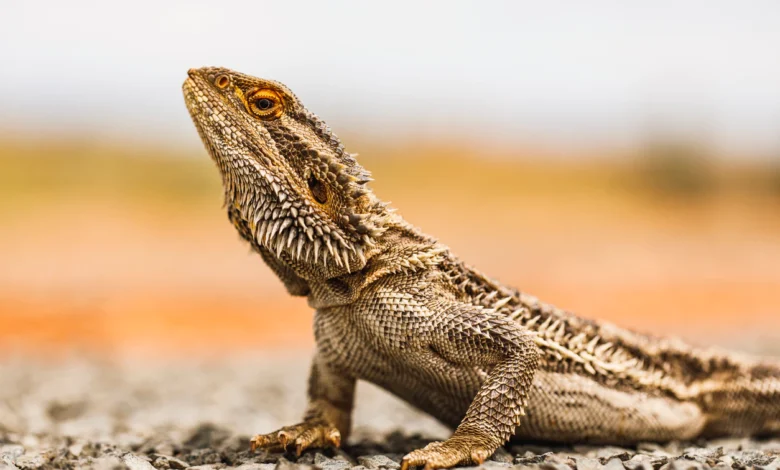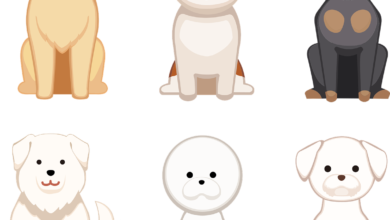What Should I Put in the Bottom of My Bearded Dragon Enclosure?

Bearded Dragon Enclosure
Well-designed reptile enclosures help your bearded dragon remain comfortable and healthy. Aside from planning the enclosure size or material, lighting options, and feeding bowls, you must select a substrate.
The right substrate offers your beardie’s habitat a natural look and provides your dragon with the necessary traction to give its claws healthy wear.
Here are some qualities to look for in a substrate:
- Easy to clean
- Natural-looking
- Absorbent
- Digestible
- Non-toxic
- Firm
Here are the best choices of substrates you can put in your bearded dragon’s enclosure.
Newspaper
Newspapers are the cheapest substrate you can use on your beardie’s enclosure. This low-cost option works best for young beardies since they cannot tear through it. Newspaper is easily replaceable when cleaning the tank, providing excellent flooring for rearing hatchlings.
You can substitute newspapers with paper towels since both offer even coverage and don’t warp from the enclosure’s heat and humidity. Newspapers are not reusable, so you should replace them regularly to keep your beardie’s enclosure safe and clean. Also, the floor may not look natural or attractive, but you save on costs and have an easy time replacing them.
Tiles or Slate
Tiles are among the preferred flooring for your dragon’s enclosure since they look beautiful, are easy to clean, and do not cause impaction risk. The best tiles are slate or ceramic tiles since they are eco-friendly and affordable. Also, ceramic and slate can conduct heat easily, so they will not decrease or amplify heat intensity within the tank.
Avoid gluing or grouting the tiles onto the tank’s floor; you need to remove them for cleaning. You should also cut the tiles to fit correctly, so use proper tools to cut safely and cleanly.
Alfalfa Pellets
Alfalfa pellets are often used as feeds for horses or rabbits but form an excellent substrate bedding material for bearded dragons. Beardies can also comfortably digest the material if it is accidentally ingested, so there is less risk of impaction. They are loose and good for digging, making your beardie feel like they are in a natural environment.
You also benefit since the pellets are easy to replace and available to purchase in bulk. Some drawbacks of using alfalfa pellets are their strong smell and their inability to absorb moisture. The dragon enclosure may get moldy, resulting in respiratory problems. Alfalfa pellets can also be colonized by bacteria and fungi, making your bearded dragon sick if swallowed.
Rubber Shelf Liner
Shelf liners made of rubber are an inexpensive substrate offering better durability than newspapers and paper towels. They come in various styles and thickness options and are easy to cut and install onto the enclosure. Rubber shelf liners also better withstand wear and tear from bearded dragons’ activities. You also clean easily since the shelf liners can be wiped clean using a cloth.
The main drawback of rubber shelf liners is their poor temperature conducting ability. Rubber are excellent insulators, so they don’t let heat out but take a lot of time to heat or cool down. You can have difficulty maintaining the right tank temperature your dragon needs to remain healthy.
Reptile Carpet
A reptile carpet is a felt- or plastic-made cloth specifically designed for terrariums. The carpets are great substrates since they are safe and have an easy installation. Also, they do not overheat or warp, so you can use hot or cold water to clean them. Reptile carpets come in plain or patterned designs and different colors, which will improve the tank’s look.
The carpet material is heavy enough to withstand wear and tear from lizard activity. The downside of using reptile carpets is that bright-colored options can be hard to clean. You also need to leave them out for several hours to air dry, so you should buy a spare carpet to swap during cleaning.
Sand
Sand is the most natural substrate you can use within your enclosure, but not all sand is safe. Unwashed, coarse, or silica (sand with sharp objects) sand options are bad for your beardie’s terrarium. Avoid using sand you’ve collected on your own; instead, buy clay, calcium, or reptile sand from pet stores.
Sand is easy to spot, clean, great for digging, and improves the enclosure’s look when used as a substrate. Non-silica play sand does not harbor bacteria, so your dragon will remain healthy.
A common issue with using sand is the high risk of impaction if swallowed. The risk is higher in young and juvenile beardies, so only use sand as a substrate for adult reptile enclosures.
Find the Best Substrate for Your Reptile Enclosures
A suitable substrate for your beardie’s enclosure will improve its comfort and keep it healthy. All substrates have pros and cons, so you need to be cautious regardless of the option you choose. If you are unsure about the items to put at the bottom of your reptile enclosures, ask an expert for help.




I was reading some of your posts on this site and I
conceive this web site is real instructive! Retain putting up.Raise range